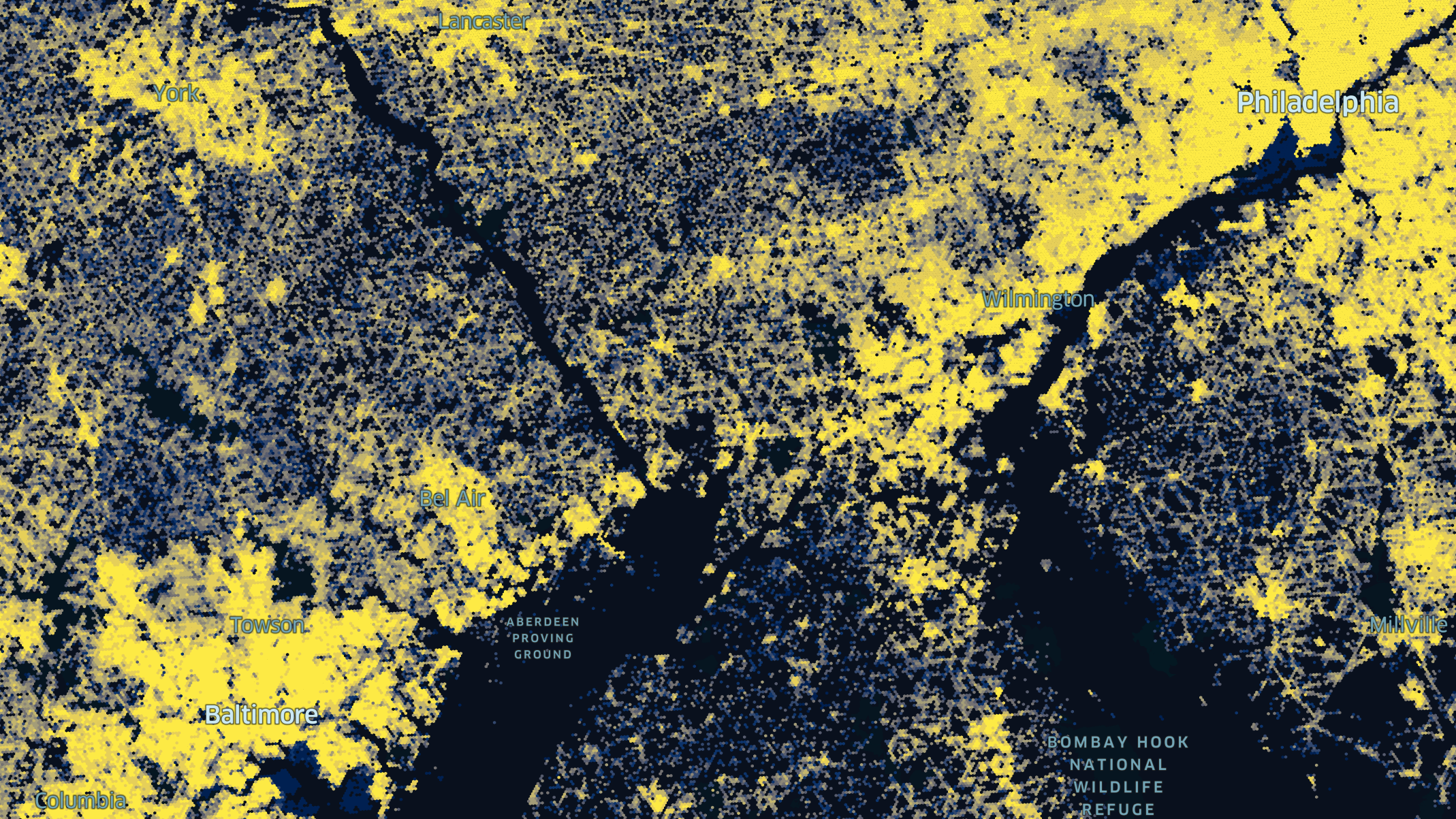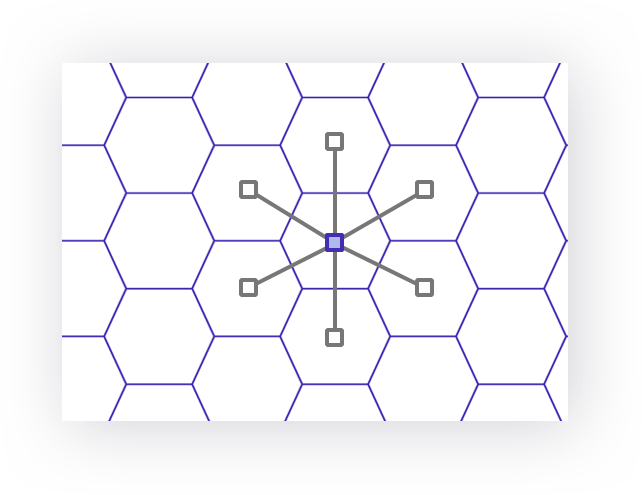Hex Tiles™
Hex Tiles™ is Foursquare's analytic tiling system for geospatial data that combines the ability of tiling systems to handle massive datasets with the power of the H3 hierarchical grid system, enabling a tabular data view with full data integrity at all resolutions.

Hex Tiles visualizing US Census Data.
What Is a Geospatial Tiling System?
One of the techniques used by modern web-based maps (like the maps found in Studio) is the use of tiling systems to render map details and visualize data across a wide range of detail levels.
Studio has support for two other tiling systems: Vector Tiles, which use lines, points, and polygons to represent real-world features, and Raster Tiles, which use pixels to show satellite and aerial imagery.
What Is Different About Hex Tiles?
Compared to earlier tile formats (such as vector and raster tiles), Hex Tiles present significant advantages for conducting large-scale geospatial analytics. With the new Hex Tile System, you can carry out on-the-fly analysis, seamlessly unify diverse spatial datasets, explore data over space and time, and visualize big data on a planetary scale – all from one platform on your browser.
How Are Hex Tiles Related to H3?
The Hex Tile System is built on existing open source technologies, including the H3 Hexagonal Grid System – the most advanced geospatial grid system available. H3 provides a globally consistent and efficient hierarchical grid for the Earth, offering superior analytics due to the advantages of the hexagonal cell structure.
The H3 system divides the Earth into hexagonal cells, a shape that provides unique advantages for modeling and spatial transformations. A key feature of H3 is the hierarchical decomposition of hexagons, which is the foundation that Hex Tiles builds upon.
With H3 as its foundation, Hex Tiles are built with analytics in mind. The system encodes tabular, gridded data into each hex tile. Because Hex Tiles use the H3 grid system to partition data, they can be used for more than just visualization. Using Hex Tiles, engage in large-scale geospatial analytics, explore spatiotemporal datasets, and create robust models with machine learning.

Hexagons have 6 neighbors who only share an edge.
Hex Tile Advantages
Hex Tiles provide several unique advantages:
1. Hex Tiles significantly expedite the data preparation and analytics processes.
Because of the unique advantages of the H3 indexing system, the time it takes to prepare, unify, and analyze data is greatly reduced.
2. Hex Tiles effectively visualize massive datasets.
The Hex Tile system intelligently loads and unloads data from your browser, allowing a user to fluidly visualize planetary-scale data at any level of granularity.
3. Hex Tiles support on-the-fly analytics and machine learning.
As Hex Tiles are encoded with data in a tabular, gridded format, users can analyze data while browsing the map. This is great for use cases such as site selection and suitability analyses.
4. Hex Tiles support temporal data.
- Enable powerful spatiotemporal analysis without having to write any code.
Where Do I Find Hex Tile Data?
The Studio platform allows users to create Hex Tiles from their own existing datasets. Currently, Hex Tiles can be created from the Data SDK.
In addition, the Data Catalog contains a growing list of Hex Tile datasets that can be utilized in Studio and the Data SDK. Select a dataset with a Hex Tile tag, then select Create Map to explore Hex Tiles at your own pace.
Why Are Hex Tiles So Performant?
The primary goal when creating Hex Tiles was to make users feel that they just instantly and effortlessly loaded the world’s data on their browser, without ever realizing that only a small portion of data is loaded at any given time.
While many systems need to access the full global data to perform analytics, the Hex Tile system only loads the data for the current area being analyzed. Once you focus on a new area, the hex tile system simply requests new tiles, rebuilds its tabular data view, and unloads old tiles, maintaining a constant level of data granularity.
This way, Hex Tiles drastically reduce the need to store and access large amounts of data in many situations. By allowing the resolution of data to match the region of interest local analytics (or viewport analytics), can always be performed even when the underlying dataset is too large to transfer completely to the user’s system or process in a reasonable time.
How Do Hex Tiles Enable GPU Analytics?
The fact that the client always has a tabular view of data in the appropriate resolution enables Hex Tiles based analytics to be conducted entirely within the user’s browser. And by performing final processing in the GPU in the end-user's own computer, Hex Tiles create an extremely fluid analytics experience, often instantly responsive to parameter changes in the analytic operations being performed, without incurring the high costs of GPU-based compute clouds.
Updated 4 months ago
